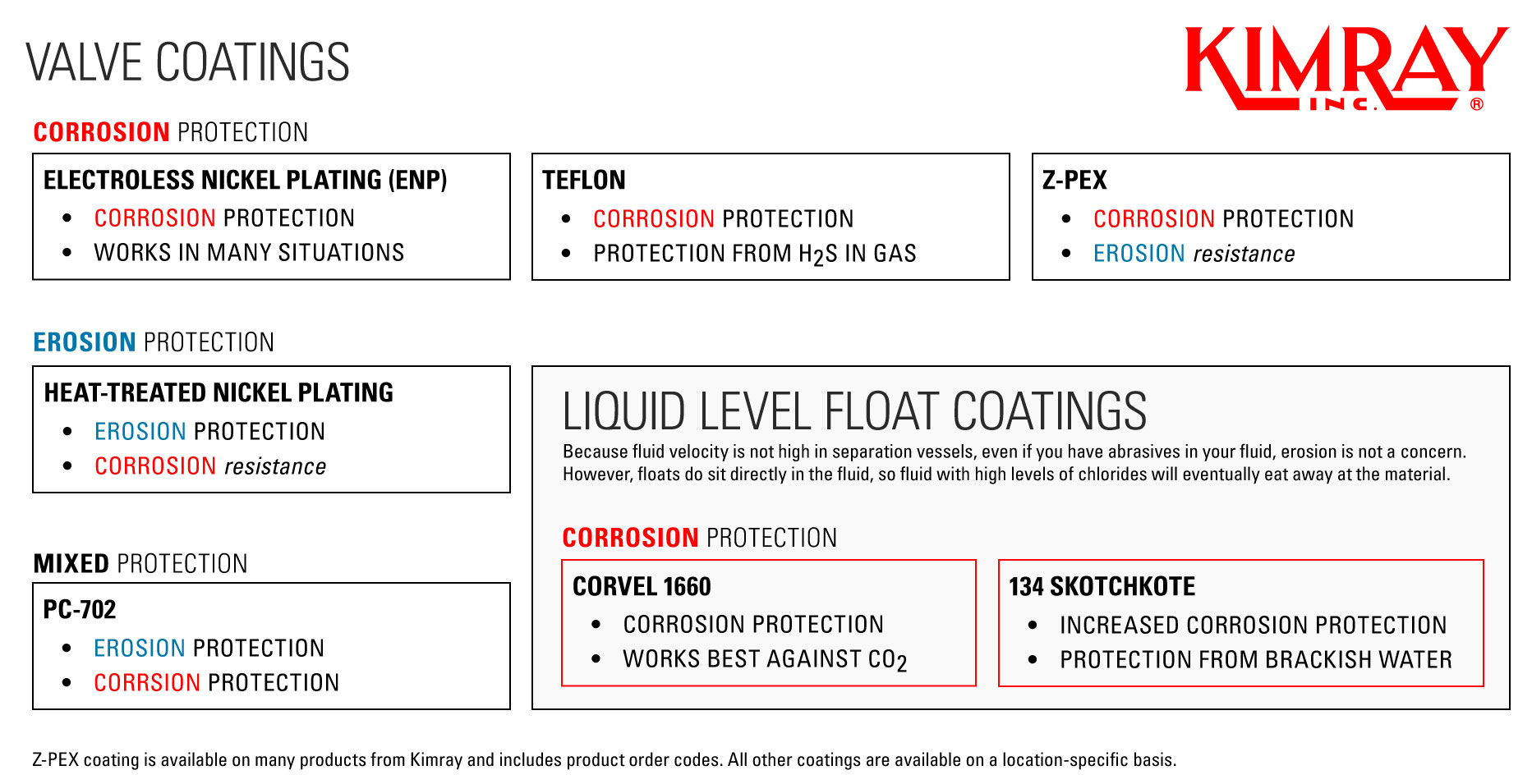Modern oil and gas production conditions involve both erosive and corrosive fluids which can prematurely compromise your equipment. Valves are especially vulnerable to damage due to their tight flow paths.
One way to deal with this challenge is to select the most robust metals for your valves. However, this can get pricey.
One cost-effective solution producers have discovered is valve coatings. In this article, we’ll discuss a few different types of coating and how they can stand up to erosion and corrosion in your oil and gas production.
How is control Valve Coating Done?
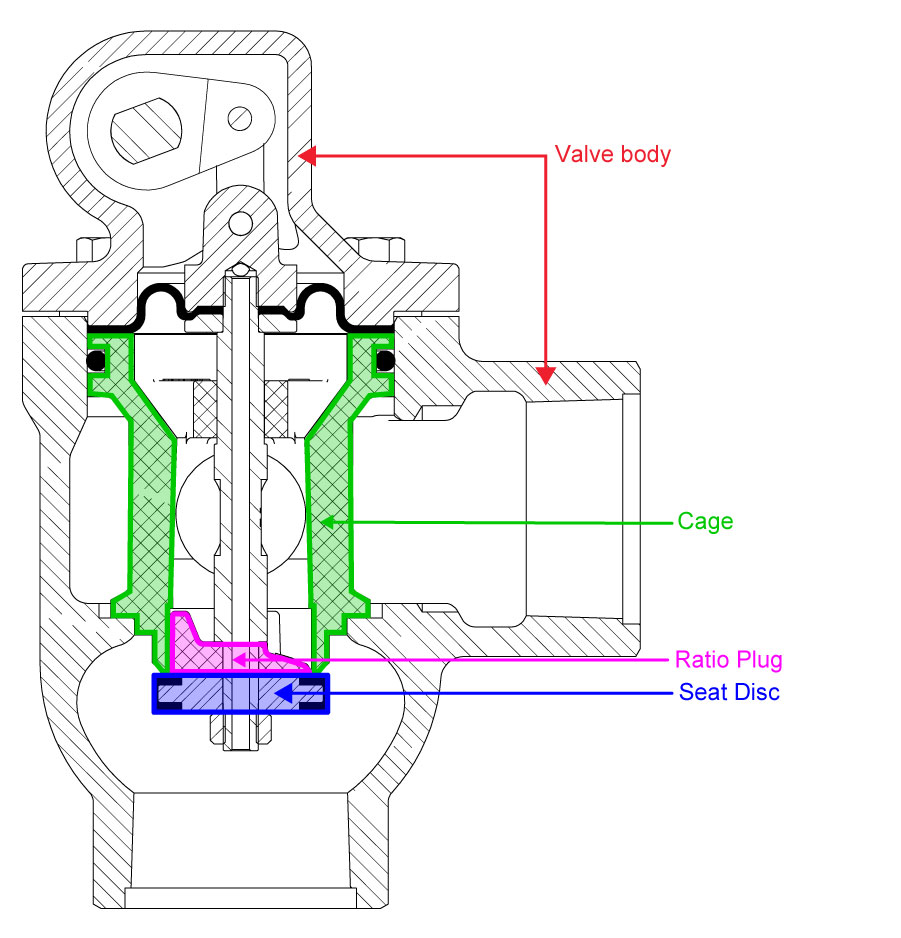 Before the typical coating process, the valve will be disassembled, and then all the wetted parts will be coated.
Before the typical coating process, the valve will be disassembled, and then all the wetted parts will be coated.
The wetted parts of a valve include all the parts directly exposed to the process flow. For example, the wetted parts of a liquid dump valve are the valve body, cage, disk, and the ratio plug.
This coating is designed to prevent damage from specific process fluids like oil, water, or wet gas.
There are two primary problems valve coating is used to prevent: Corrosion & Erosion
Control Valve Corrosion
Corrosion can occur in many areas of oil and gas production due to the high chloride levels present in produced water.
This chloride can corrode metal surfaces, causing them to pit and rust. These coating options can help mitigate corrosion:
Standard Electroless Nickel Plating (ENP)
Standard Electroless Nickel Plating (ENP) is a great option to protect against corrosion, particularly when chlorides are present. This is a cost-effective option and works well in many situations.
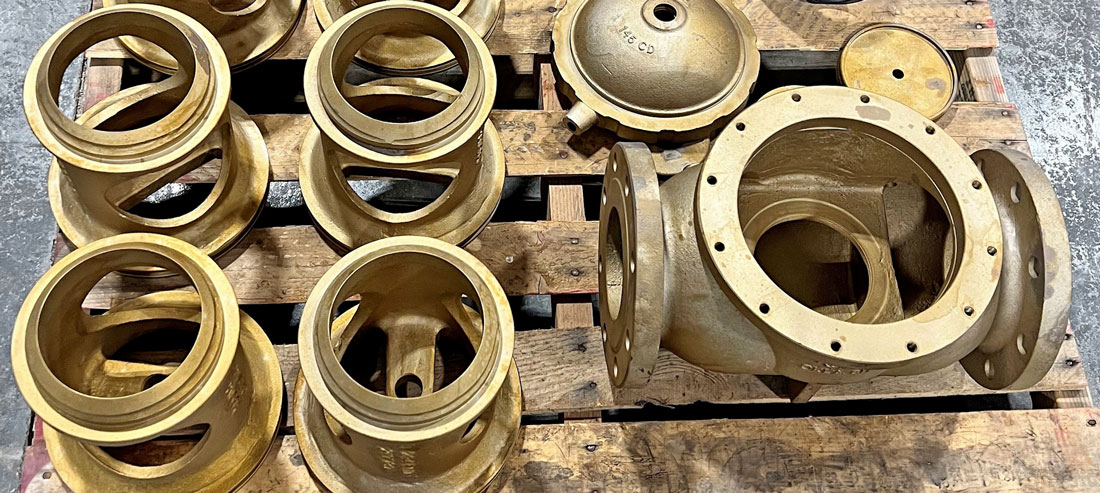
Teflon Coating
Teflon coating is another corrosion-resistant coating. Because it is a plastic material, it can’t be corroded like metals.
Teflon makes surfaces nearly impossible for unwanted elements such as paraffin wax or other basic sediment to stick to them, and it is a good option for gas with H2S as well. However, it is not recommended for production containing harsh water or heavy solids like sand because its erosion resistance is very low.
Z-PEX Coating
Z-PEX coating is used first for corrosion resistance, but also helps with preventing erosion. This coating is available on many products from Kimray and includes product order codes, while other coatings may be available on a more location-specific basis.
Z-PEX also lowers the friction coefficient of the coated parts and helps to lessen the effects of erosion. It prevents damage like rust and corrosion caused by chlorides in your fluid. Learn more specifics about Z-PEX coatings here.
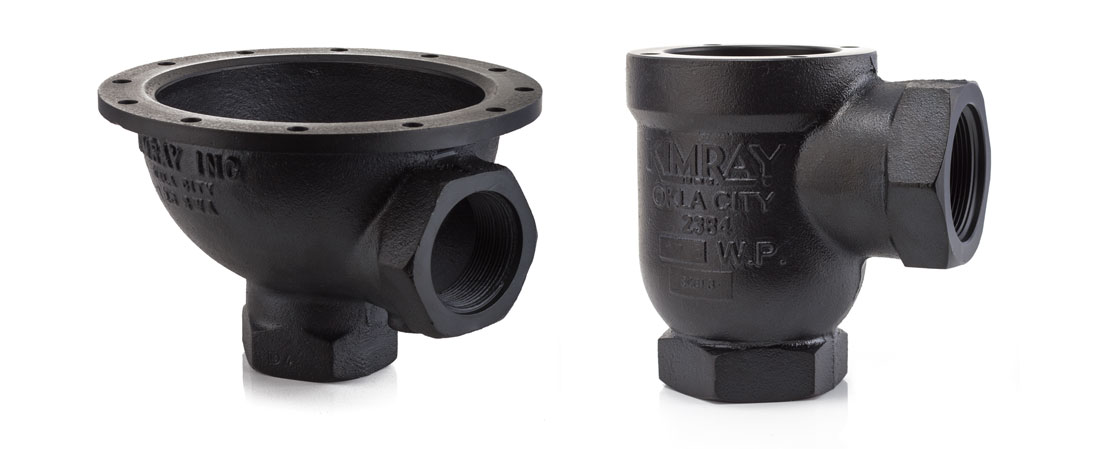
Control Valve erosion
Different coating options are available specifically with erosion in mind, but they also offer some level of protection from corrosion.
Heat-treated Nickel Plating
Heat-treated Nickel Plating is similar in protection and expense to standard nickel plating but is used first and mostly for erosion. When the nickel plating is heated, it loses some corrosion protection properties, but increases protection from erosion.
It creates a seal that prevents chlorides from damaging the metal. This coating is more cost-effective and protects better than stainless steel in most cases, especially when chlorides are present.
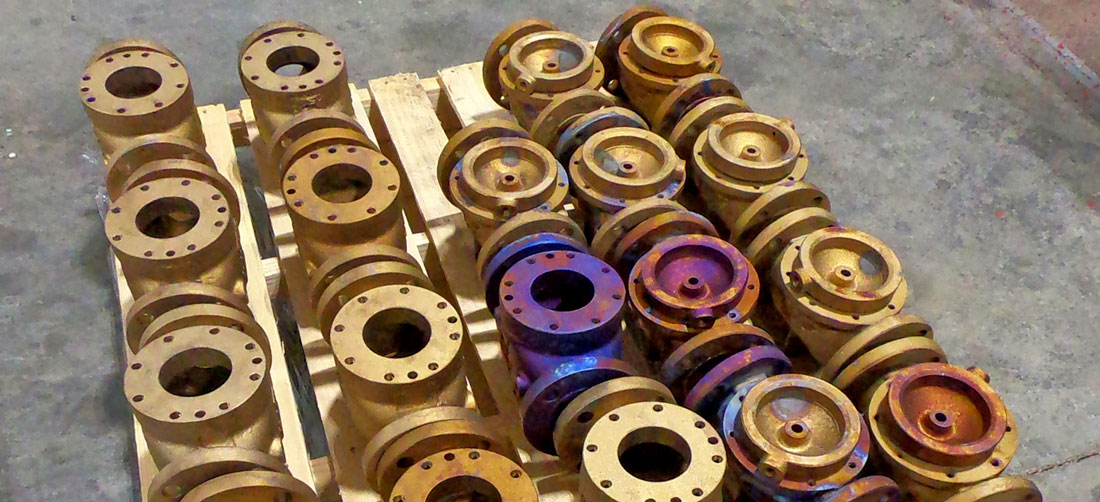
PC-702 Coating
If you need the erosion protection of heat-treated nickel plating, but also corrosion protection, PC-702 Coating offers the best solution.
Corrosion and erosion in liquid level FLOATS
Another piece of equipment you may want to coat is a liquid level float.

Because fluid velocity is not high in separation vessels, even if you have abrasives in your fluid, erosion is not a concern.
However, floats do sit directly in the fluid, so fluid with high levels of chlorides will eventually eat away at the material. We offer two options for floats to prevent corrosion.
Corvel 1660
The first option is Corvel 1660. This works best to protect against conditions that include CO2.
134 Skotchkote
134 Skotchkote is similar to Corvel, but with a thicker coating. It is used for floats mostly in brackish water.
To speak with an expert about how to find the best coating to withstand your well site's unique conditions, contact your local Kimray store or authorized distributor.








































